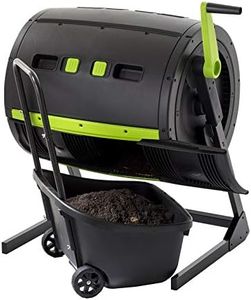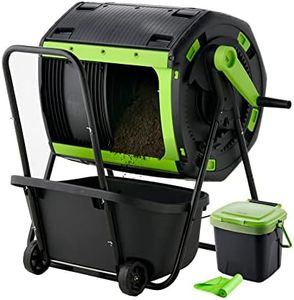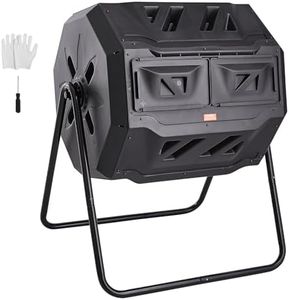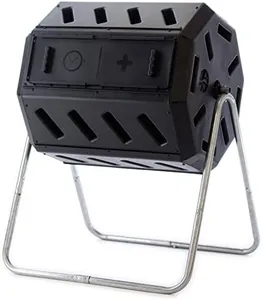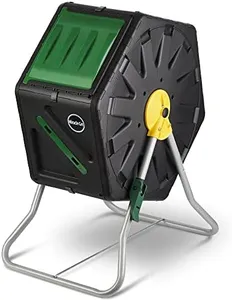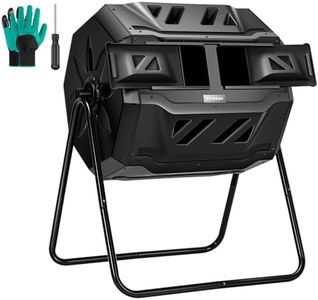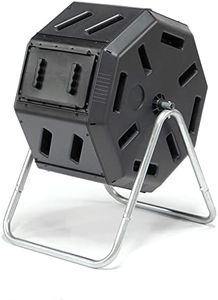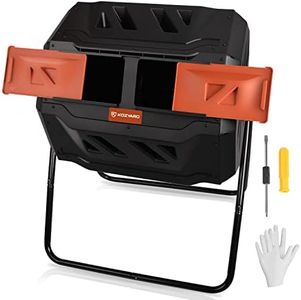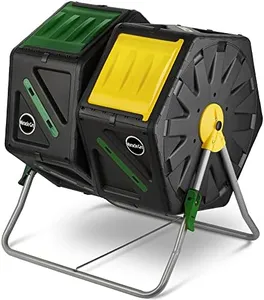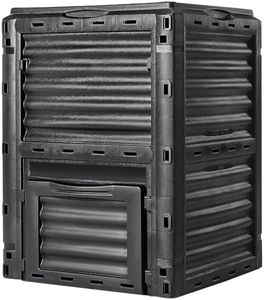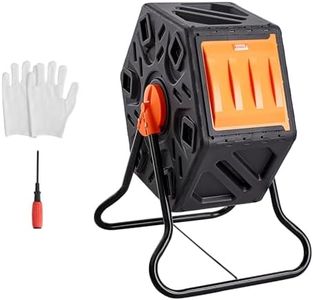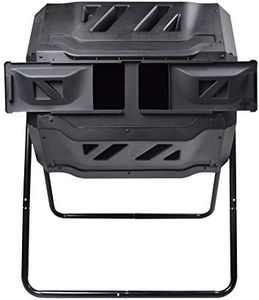We Use CookiesWe use cookies to enhance the security, performance,
functionality and for analytical and promotional activities. By continuing to browse this site you
are agreeing to our privacy policy
10 Best Compost Tumblers
From leading brands and best sellers available on the web.Buying Guide for the Best Compost Tumblers
Choosing the right compost tumbler can make composting much easier and more efficient for you, whether you're a gardener, someone reducing kitchen waste, or just starting out with sustainable living. The best approach to picking a compost tumbler is to think about your available space, how much compostable material you generate, and how much effort you want to put into turning your compost. Understanding the key features of compost tumblers will help you find something that's not only effective but also suits your lifestyle and composting goals.CapacityCapacity refers to how much compost material the tumbler can hold at once. This spec is important because it determines how much kitchen and yard waste you can process at a time. Smaller compost tumblers, often under 40 gallons, are suitable for people living in apartments or those with little waste. Medium sizes (40–80 gallons) fit most average households and small gardens. Large units, typically over 80 gallons, are best for big families or serious gardeners with a lot of yard waste. Choosing the right size depends on how much compostable material you expect to have and your available space for the tumbler.
MaterialMost compost tumblers are made from either plastic or metal. This specification matters because it affects the durability, weight, and long-term usability of the tumbler. Plastic tumblers are lightweight, weather-resistant, and usually easier to move, but not all plastics are equally UV-resistant. Metal ones tend to be sturdier but can rust if not coated, and might be heavier to turn. Pick the material based on your region's weather, how much handling and moving you plan to do, and your preference for longevity versus ease of use.
Aeration and VentilationAeration means how well air can circulate through the materials inside the tumbler. Good aeration is crucial for composting because it helps break down materials faster and prevents foul smells. Compost tumblers come with different numbers and patterns of ventilation holes or slats. Some even have internal fins or mixing bars to help stir the contents. More advanced tumblers promote better air flow, speeding up decomposition. If you want fast results and less smell, look for models with good ventilation and internal mixing features. People who don’t want to turn or mix often should pay extra attention to this feature.
Turning MechanismThe turning mechanism is how you rotate or spin the tumbler. This spec matters because easy rotation helps mix materials evenly, adds oxygen, and accelerates composting. Some tumblers have a handle or crank for effortless spinning, while others you need to rotate by gripping and turning the whole drum. More convenient mechanisms are especially helpful if you have limited strength or mobility. Choose a model with a turning method that feels comfortable for you to use regularly — the easier it is, the more likely you'll stick with the process.
Number of ChambersCompost tumblers may have one or two chambers. This spec impacts your ability to have a continual supply of finished compost. Single-chamber tumblers hold all material together, so you have to wait until it’s fully processed before you can start a new batch. Dual-chamber models let you fill one side while the other 'cooks,' so you can have a continuous process. If you want a steady supply of compost and don’t want to pause your composting, go for a dual-chamber model. However, if you’re just starting or won’t produce much waste, a single chamber might keep things simple.
Access and Loading FeaturesAccess refers to how easily you can fill the tumbler and remove finished compost. This feature is important because regular use should be convenient, not messy or difficult. Some tumblers have large, removable lids or doors while others may have smaller openings. Large openings make adding kitchen scraps and removing compost much easier, especially if you’re composting bulky materials. If you want cleaner, simpler workflows and less struggle, look for a tumbler with wide, user-friendly access points.
Drainage CapabilitiesDrainage determines how well excess moisture is managed inside the tumbler. This feature is crucial because too much water can make your compost smelly and slow down the process. Some tumblers come with built-in drainage holes or even base trays to collect liquid 'compost tea.' If you're composting a lot of wet kitchen scraps, pay attention to drainage features to keep the mix healthy. Users with drier materials or who live in dry climates may not need as much drainage.
